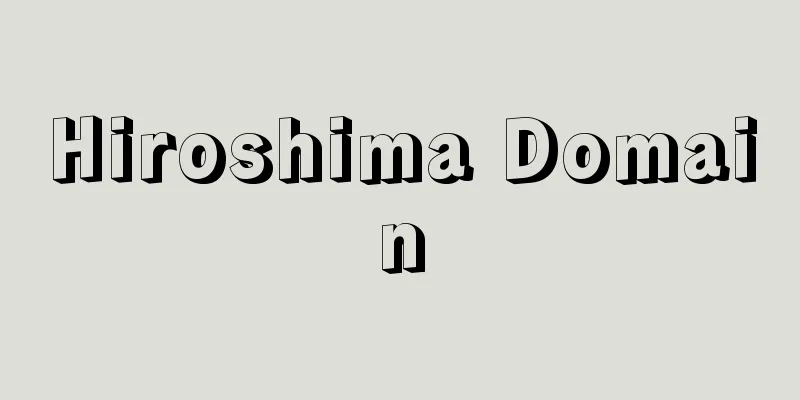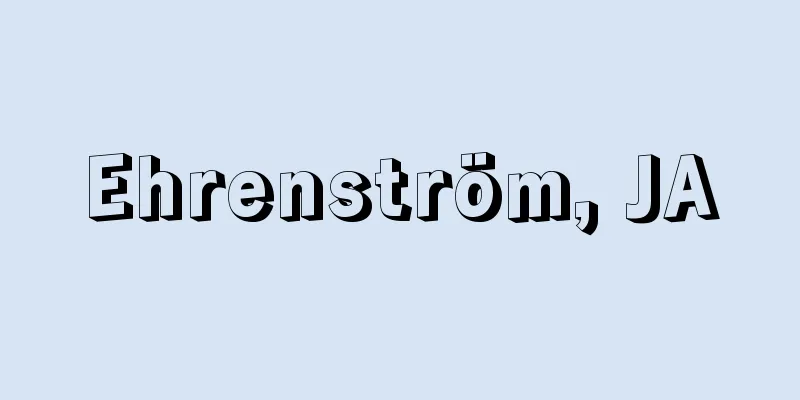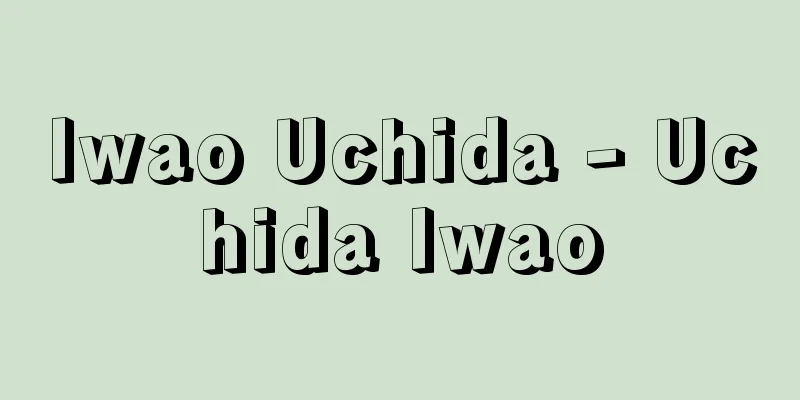Hiroshima Domain

|
This was an outside domain that ruled over both Aki and Bingo provinces. It is also called the Aki Domain or the Geishu Domain. In 1600 (Keicho 5), after Mori Terumoto was defeated in the Battle of Sekigahara and transferred to Bungo and Choshu provinces, Fukushima Masanori from Kiyosu, Owari Province (Aichi Prefecture) was given the domain of 490,000 koku in Geibi. In addition to Hiroshima Castle, Masanori established branch castles in Mihara, Miyoshi (Miyoshi), Ogata, Tomo, Kannabe, and Tojo, and assigned magistrates to each of the 22 Geibi counties. However, in 1615 (Genwa 1), all castles except Mihara Castle were demolished due to the One Castle per Province Order. In 1601, he carried out a land survey of his territory, proclaiming approximately 90,000 koku, and established the foundations of the shogunate-han system of rule, including the separation of towns and cities, the establishment of a tribute system, and the development of a transportation system. In 1619, when Masanori was abolished, Asano Nagaakira was transferred from Wakayama in Kii Province to the province of Aki and eight counties in Bingo with a fief of over 420,000 koku. Since then, Mitsuakira, Tsunaakira, Tsunanaga, Yoshinaga, Munetsune, Shigeakira, Narikata, Naritaka, Yoshiteru, Nagamichi, and Nagakoto continued as rulers for 12 generations, leading up to the Meiji Restoration. In 1632 (Kan'ei 9), when Mitsuakira was the lord of the domain, he gave 50,000 koku to his illegitimate brother Nagaharu, dividing the Miyoshi (Miyoshi) domain. Due to the land-filling and large-scale development of new fields in the Kan'ei and Shoho eras, the shogunate report of 1664 (Kanbun 4) showed that the land-filling and new field-filling exceeded 50,000 koku. In 1720 (Kyoho 5), the line of succession of the Miyoshi domain was cut off, and the 50,000 koku domain was returned to the main domain. The Aoyama Naisho branch family with 30,000 koku was created. The fifth lord, Yoshinaga, was praised by Muro Kyuso as the greatest of his time, and carried out powerful domain government reforms, including the county system reform in 1712 (Shotoku 2), but faced resistance in 1718 (Kyoho 3) when the entire domain rose up in revolt. In the coastal areas facing the Seto Inland Sea, salt, cotton, tatami mats, oysters, seaweed, and seafood developed, while inland areas bordering the Chugoku Mountains developed specialty products such as iron, paper, hemp, and forestry processing. The domain established a domain monopoly on lumber, iron, and paper from an early stage, and later extended this to tatami mats, cotton, kerosene, and ramie. Shinshu was popular as a religion, accounting for nearly half of the temples in the domain. The followers of Aki were tight-knit, and produced many outstanding scholars such as Eun, Daiei, and Soei. Scholars from the private sector, including the three brothers of Yoriie of Takehara and Minamihama of Kagawa, were also appointed to the domain school. At the domain schools, schools of learning such as Kogaku, Zhu Xi, and Ansai were divided into Eastern and Western schools, but in 1785 (Tenmei 5), five years before the shogunate banned alternative schools in the Kansei era, the domain schools were unified with Zhu Xi as the core. The Choshu War that began in 1864 (Genji 1) caused turmoil as the Shogunate's frontline base was located under Hiroshima Castle, and the western part of Saeki County suffered great damage from the war. In 1867 (Keio 3), the Hiroshima domain formed a three-domain alliance with Satsuma and Choshu, and while it embarked on an overthrow of the Shogunate, it also submitted a petition for the restoration of imperial rule. As the domain's views were not unified, it lost credibility as an opportunistic domain and was excluded from the mainstream of the restoration. In 1871 (Meiji 4), the domain was abolished and became Hiroshima Prefecture. [Doi Sakuji] "History of Hiroshima Prefecture: Early Modern Period 1 & 2" (1981, 1984, Hiroshima Prefecture)" ▽ "Revised History of Hiroshima City: 7 volumes (1957-1962, Hiroshima City)" ▽ "History of the Gei Domain: 27 volumes (1980, Bunken Publishing)" One of the most famous castles in the Chugoku region. It is also called Touma Castle or Carp Castle. Construction began in 1589 (Tensho 17) by Mori Terumoto and was completed in 1599 (Keicho 4). The five-story castle tower was lost in the atomic bombing of 1945 (Showa 20), but was rebuilt in 1958. The Ninomaru was restored in 1994 (Heisei 6). Nationally designated historic site Hiroshima City, Hiroshima Prefecture © Fujino Yuya "> Hiroshima Castle Source: Shogakukan Encyclopedia Nipponica About Encyclopedia Nipponica Information | Legend |
|
安芸(あき)・備後(びんご)両国を領有した外様(とざま)藩。安芸藩、芸州(げいしゅう)藩ともいう。1600年(慶長5)関ヶ原の戦いに敗北した毛利輝元(もうりてるもと)が防長2国に移封されたあと、尾張(おわり)国(愛知県)清洲(きよす)から福島正則(まさのり)が芸備49万石余に入封。正則は広島城のほか、三原(みはら)、三吉(三次)(みよし)、小方(おがた)、鞆(とも)、神辺(かんなべ)、東城(とうじょう)に支城を設け、芸備22郡の各郡に代官衆を配したが、1615年(元和1)の一国一城令により、三原城を除き取り壊された。1601年領内総検地を行い、約9万石を打ち出したほか、町在分離、貢租体系、交通制度の整備など幕藩制支配の基礎を成立させた。1619年正則の改易により紀伊国和歌山から浅野長晟(ながあきら)が、安芸一国、備後8郡42万石余に入封。以来、光晟(みつあきら)、綱晟(つなあきら)、綱長(つななが)、吉長(よしなが)、宗恒(むねつね)、重晟(しげあきら)、斉賢(なりかた)、斉粛(なりたか)、慶熾(よしてる)、長訓(ながみち)、長勲(ながこと)と12代続いて明治維新に至った。 1632年(寛永9)藩主光晟のとき、庶兄長治(ながはる)に5万石を与えて三吉(三次)藩を分知。寛永(かんえい)・正保(しょうほう)の地詰(じづめ)や大規模な新田開発により1664年(寛文4)の幕府報告では打出高・新田高が5万石を上回った。1720年(享保5)三次藩の継嗣(けいし)断絶により領知5万石は本藩に還付。3万石の青山内証(ないしょう)分家がつくられる。5代吉長は室鳩巣(むろきゅうそう)に当代随一と評され、1712年(正徳2)の郡制改革をはじめ強力な藩政改革を行うが、1718年(享保3)には全藩一揆(いっき)の抵抗を受ける。瀬戸内海に面した沿海部では、塩、木綿、畳表、牡蠣(かき)、海苔(のり)、海産物、中国山地に接した内陸部では、鉄、紙、麻苧(あさお)、林産加工の特産物が発展し、藩は早くから材木、鉄、紙などに藩専売制を敷き、のち畳表、木綿、灯油、扱苧(こぎそ)などにも及ぼした。宗教は真宗が盛んで、領内寺院の半数近くを占め、安芸門徒の結束が固く、慧雲(えうん)、大瀛(だいえい)、僧叡(そうえい)ら優れた学僧が出た。竹原の頼(らい)家三兄弟や香川南浜(なんぴん)をはじめとして民間出身の学者が輩出し、藩校にも登用された。藩校学問所では、古学、朱子(しゅし)学、闇斎(あんさい)学など各学派が東学・西学に分かれていたが、幕府の寛政(かんせい)異学の禁に先んずること5年、1785年(天明5)に朱子学を軸とする藩学統一が行われた。1864年(元治1)に始まる長州戦争には、幕軍の前線基地が広島城下に置かれて騒然となり、佐伯(さえき)郡西部は戦禍を被って大きな犠牲が出た。1867年(慶応3)広島藩は薩摩(さつま)・長州と三藩同盟を結び、討幕に踏み切りながら、大政奉還の建白を行うなど、藩論が統一せず日和見(ひよりみ)藩として信用を失い、維新の主流から外されていった。1871年(明治4)廃藩、広島県となる。 [土井作治] 『『広島県史 近世1・2』(1981、84・広島県)』▽『『新修広島市史』全7巻(1957~62・広島市)』▽『『芸藩史』全27巻(1980・文献出版)』 中国地方屈指の名城。当磨城、鯉城ともよばれる。1589年(天正17)、毛利輝元が築城に着手、1599年(慶長4)に完成した。5層の天守は1945年(昭和20)の原爆により失われたが、1958年に再建。1994年(平成6年)には二の丸が復原された。国指定史跡 広島県広島市©藤野優哉"> 広島城 出典 小学館 日本大百科全書(ニッポニカ)日本大百科全書(ニッポニカ)について 情報 | 凡例 |
<<: Hiroshima Plain - Hiroshima Heiya
>>: Hiroshima University - Hiroshima University
Recommend
Kuze [town] - habit
An old town in Maniwa County in the upper reaches ...
Osawa Town - Osawa Town
...A city in the southwest of Chiba Prefecture, f...
Marinatos, S.
...This pumice and volcanic ash are dacite, and w...
Cherry blossom viewing in Daigo
On March 15, 1598 (Keicho 3), Toyotomi Hideyoshi ...
Rhenium oxide - Sankarenium
The oxides of rhenium with the oxidation states IV...
Superintendent - Kanshi
In China, the general term for local officials in ...
Boa
〘Noun〙 (boa)① A boa constrictor, a non-venomous sn...
Andon
A type of oil lamp. A general term for lamps that...
Cylindrical surface
...A surface obtained by fixing a point on a line...
Onji (soil) - Onji
…The name comes from the fact that the topsoil is...
La Colmena (English spelling)
A Japanese settlement in a farming village located...
Reduction dyeing method
...(2) Mordant dyeing method: When dye molecules ...
County of Aragon
…The Ebro River is important to the local economy...
codon
…(3)Another difference between eukaryotic and pro...
Ishikata
...a craftsman who cuts stone (quarries), process...









